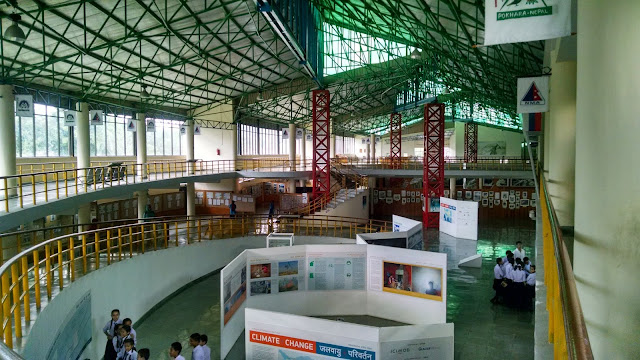Back from 7 days trekking in the Himalayas! Four days up to Annapurna Base Camp, elevation 4150m, nestled in the enormous Annapurna Himal, home to the world's 10th highest mountain: Annapurna I, elevation 8091m. It's the (apparently shorter from this perspective) one on the right:
Annapurna I is the deadliest of the "eight-thousanders" and one of the most difficult to climb. More than 60 climbers have died on it, about 1 in every 3 who reach the summit.
The landscape is incredible. Towering cliffs, deep ravines, lush greens and icy peaks, all shrouded in clouds. Tiny villages only accessible by foot.
We stayed in teahouses: we're on one of the most developed trails so they were like extremely basic hotels. $3 a night for a room but you're expected to buy your (still pretty cheap) dinner and breakfast from them. Some even have pay-to-access WiFi and electricity! Good common dining room for meeting fellow travellers. We usually ate the same things every day: gurung bread breakfast, "dhal bhat, cold lemon" for lunch, noodles or rice for dinner.
Still pretty quiet post-quake, so not very many people out on the trails, but lots of locals who always greet you with a friendly "namaste". The porters are particularly impressive: they carry everything that the villages and teahouses need, in wicker baskets with the weight supported by a strap across their foreheads. We saw porters carrying chickens, plywood, fruit, even one with a 75kg bag of rice, while he only weighted 56kg himself.
We considered trekking independently, but we're so glad for our guide
Ram. Constant smile, always eager to look out for us and explain everything about the mountains and the local culture and teach us Nepali phrases. Hands-down the nicest, kindest person we've met on our trip.
Any worthwhile trek will have challenges, and we had our share:
-Rain. It's the end of the monsoon season, so it rained every day, once for 20 hours straight. Day 2 it rained so hard that the rain seeped through my pack straps and collected in the bottom of my pack cover, soaking most of my (foolishly not plastic-bagged) clothes. Luckily the essentials stayed dry.
-Leeches. Vicious ugly vampire inchworms. Cling to trailside brush where it's damp and try to snag passers-by. We each had at least one breach our defenses, but caught many more creepily climbing our boots and trekking poles.
-Altitude sickness. We went slow the last two days up, but not slow enough and our time at base camp was short and uncomfortable. Minor altitude sickness is like a hangover: headache, nausea, dehydration. Symptoms can escalate to serious quickly, so we came down in elevation as soon as we could. Thus, few base camp photos.
Note to future selves: for maximum enjoyment, hike for 5 days or less and at altitudes below 4000m.
-Peter

































































